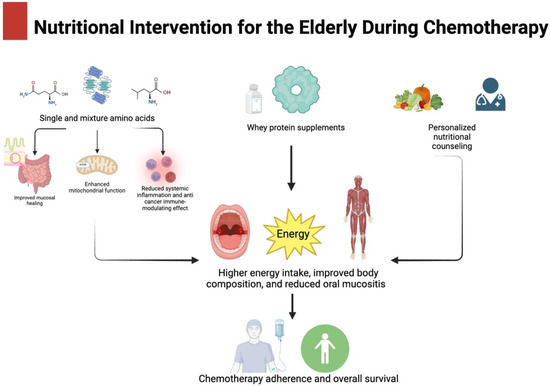Origis Energy and Pioneer Community Energy Announce 20-Year Solar + Battery Storage Agreement – California Community Choice Association

Report on the Strategic Energy Agreement Between Origis Energy and Pioneer Community Energy
Introduction
A 20-year Power Purchase Agreement (PPA) has been established between Origis Energy and Pioneer Community Energy for a solar and battery storage facility. This report outlines the details of the agreement and provides an in-depth analysis of its significant contributions to the United Nations Sustainable Development Goals (SDGs).
Project Overview and Strategic Alignment with Global Goals
Agreement Details
- Parties Involved: Origis Energy (developer) and Pioneer Community Energy (publicly-owned electricity provider).
- Technology: A utility-scale solar power generation facility integrated with a battery energy storage system (BESS).
- Duration: A 20-year contractual term ensuring long-term energy stability and environmental benefits.
Contribution to United Nations Sustainable Development Goals (SDGs)
The partnership directly supports the 2030 Agenda for Sustainable Development by making substantial contributions to several key SDGs.
-
SDG 7: Affordable and Clean Energy
- The project significantly increases the share of renewable energy in the regional power grid.
- It ensures access to affordable, reliable, and modern energy for the communities served by Pioneer Community Energy.
- The inclusion of battery storage enhances grid stability and reliability, addressing the intermittency of solar power.
-
SDG 13: Climate Action
- The facility will directly combat climate change by displacing fossil fuel-based energy generation, thereby reducing greenhouse gas emissions.
- It strengthens resilience and adaptive capacity to climate-related hazards by contributing to a more robust and decentralized energy infrastructure.
- This initiative represents a concrete action to integrate climate change measures into local and national policies and planning.
-
SDG 11: Sustainable Cities and Communities
- The agreement supports the development of inclusive, safe, and resilient community infrastructure.
- By providing clean energy, the project helps reduce local air pollution, creating healthier living environments.
- It ensures that communities have access to a fundamental service—clean electricity—which is essential for sustainable development and economic vitality.
-
SDG 9: Industry, Innovation, and Infrastructure
- This project constitutes a major investment in building resilient, sustainable, and innovative energy infrastructure.
- The deployment of advanced solar and battery storage technologies promotes industrial innovation and supports a technological upgrade of the energy sector.
- It facilitates the transition to a green economy by creating the foundational infrastructure required for sustainable industrialization.
Analysis of SDGs, Targets, and Indicators
-
Which SDGs are addressed or connected to the issues highlighted in the article?
The article, despite its brevity, highlights a project that directly connects to several Sustainable Development Goals. The core of the announcement—a long-term agreement for solar power and battery storage—touches upon energy, climate, infrastructure, and community sustainability.
-
SDG 7: Affordable and Clean Energy
This is the most prominent SDG related to the article. The project’s focus on “Solar” power is a direct contribution to increasing the share of clean and renewable energy sources.
-
SDG 13: Climate Action
By investing in solar energy, a zero-emission power source, the project is a direct measure to combat climate change and its impacts by reducing reliance on fossil fuels.
-
SDG 11: Sustainable Cities and Communities
The involvement of “Pioneer Community Energy” suggests the project is aimed at providing sustainable services at the community level. Clean energy is a fundamental component of sustainable community infrastructure.
-
SDG 9: Industry, Innovation, and Infrastructure
The development of a “Solar + Battery Storage” facility represents an investment in modern, sustainable, and resilient infrastructure. The combination of solar generation with battery storage is an innovative solution to ensure energy reliability.
-
SDG 17: Partnerships for the Goals
The article announces an “agreement” between two distinct entities, “Origis Energy” and “Pioneer Community Energy.” This collaboration is a clear example of a partnership to achieve sustainable development objectives.
-
-
What specific targets under those SDGs can be identified based on the article’s content?
Based on the nature of the project described, several specific SDG targets can be identified:
-
Under SDG 7 (Affordable and Clean Energy):
- Target 7.2: “By 2030, increase substantially the share of renewable energy in the global energy mix.” The “20-Year Solar” agreement directly contributes to this target by increasing the capacity and supply of renewable energy.
- Target 7.a: “By 2030, enhance international cooperation to facilitate access to clean energy research and technology… and promote investment in energy infrastructure and clean energy technology.” The agreement between the two organizations promotes investment in clean energy infrastructure (solar and battery storage).
-
Under SDG 13 (Climate Action):
- Target 13.2: “Integrate climate change measures into national policies, strategies and planning.” This project represents a local or regional implementation of climate action strategies through tangible infrastructure development.
-
Under SDG 11 (Sustainable Cities and Communities):
- Target 11.6: “By 2030, reduce the adverse per capita environmental impact of cities…” Supplying a community with clean solar power helps reduce air pollution and the overall environmental footprint associated with energy consumption.
-
Under SDG 9 (Industry, Innovation, and Infrastructure):
- Target 9.4: “By 2030, upgrade infrastructure… to make them sustainable, with increased resource-use efficiency and greater adoption of clean and environmentally sound technologies…” The solar and battery storage facility is a direct upgrade and development of sustainable energy infrastructure using clean technology.
-
Under SDG 17 (Partnerships for the Goals):
- Target 17.17: “Encourage and promote effective public, public-private and civil society partnerships…” The agreement between Origis Energy and Pioneer Community Energy is a direct example of such a partnership aimed at a sustainable outcome.
-
-
Are there any indicators mentioned or implied in the article that can be used to measure progress towards the identified targets?
The article does not provide explicit quantitative data, but the nature of the project implies several key performance indicators that would be used to measure its success and contribution to the SDGs.
-
Implied Indicators for SDG 7:
- Indicator 7.2.1 (Renewable energy share in the total final energy consumption): Progress can be measured by the amount of solar energy (in kWh or MWh) generated by the facility and supplied to the community, which increases the percentage of renewables in the local energy mix.
-
Implied Indicators for SDG 13:
- Greenhouse Gas (GHG) Emissions Reduction: A primary indicator for a solar project is the volume of CO2 emissions avoided by displacing fossil fuel-based power generation. This directly measures progress on climate action.
-
Implied Indicators for SDG 9:
- Investment in Sustainable Infrastructure: The total financial investment in the solar and battery storage facility serves as an indicator of commitment to building sustainable infrastructure.
- Installed Capacity of Renewable Energy: The total power capacity of the solar farm (measured in megawatts, MW) and the storage capacity of the batteries (in megawatt-hours, MWh) are key indicators of the scale of the clean technology adoption.
-
Implied Indicators for SDG 17:
- Existence of a Formal Partnership Agreement: The “20-Year… Agreement” itself is an indicator of a long-term, formal partnership (Indicator 17.17.1) dedicated to a sustainable goal.
-
-
SDGs, Targets and Indicators Table
SDGs Targets Indicators (Implied from Article) SDG 7: Affordable and Clean Energy 7.2: Increase substantially the share of renewable energy in the global energy mix. Amount of solar energy (kWh/MWh) generated; Installed capacity (MW) of the solar facility. SDG 13: Climate Action 13.2: Integrate climate change measures into policies, strategies and planning. Volume of greenhouse gas (CO2) emissions avoided. SDG 11: Sustainable Cities and Communities 11.6: Reduce the adverse per capita environmental impact of cities. Provision of clean energy to the community, leading to reduced local air pollution. SDG 9: Industry, Innovation, and Infrastructure 9.4: Upgrade infrastructure and retrofit industries to make them sustainable. Investment in the solar and battery storage facility; Capacity of battery storage system (MWh). SDG 17: Partnerships for the Goals 17.17: Encourage and promote effective public, public-private and civil society partnerships. The existence of the 20-year agreement between Origis Energy and Pioneer Community Energy.
Source: cal-cca.org

What is Your Reaction?
 Like
0
Like
0
 Dislike
0
Dislike
0
 Love
0
Love
0
 Funny
0
Funny
0
 Angry
0
Angry
0
 Sad
0
Sad
0
 Wow
0
Wow
0












































































